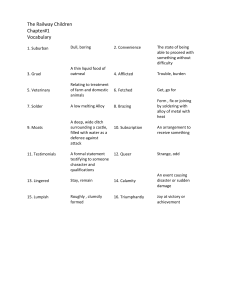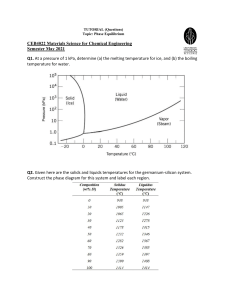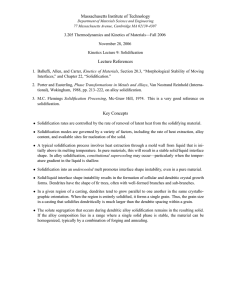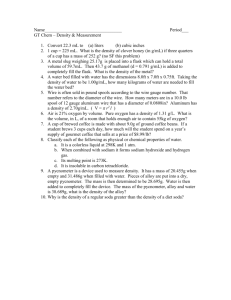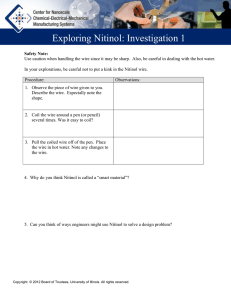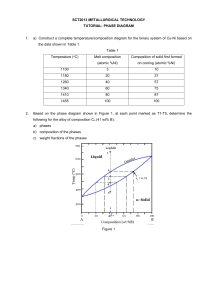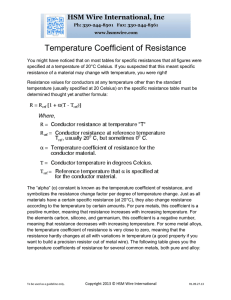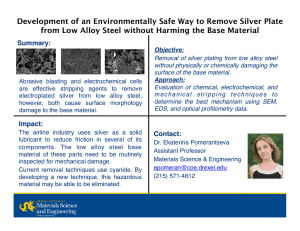NiTiNOL Nickel Titanium Naval Ordnance Laboratory
advertisement
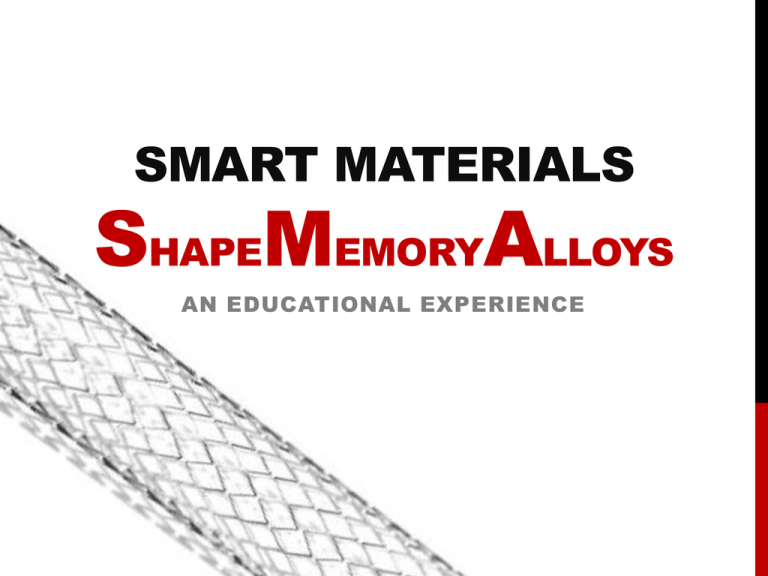
SMART MATERIALS SHAPEMEMORYALLOYS AN EDUCATIONAL EXPERIENCE SCIENTIFIC BACKGROUND 1932 A. Ölander discovered the pseudoelastic behavior of the Au-Cd alloy. 1938 Greninger & Mooradian observed phase changes by decreasing and increasing the temperature of a Cu-Zn alloy. 1960 The U.S. Naval Ordnance Laboratory discovered a new material that exhibited shape memory effect. This alloy was named NiTiNOL Nickel Titanium Naval Ordnance Laboratory SCIENTIFIC BACKGROUND SETTING “ORIGINAL” SHAPE ACTUATION: MUSCLE WIRE Nitinol Wire Stretched at room temp. Small current returns wire to original length Up to 8% stretch APPLICATIONS Railway Signal APPLICATIONS Robotic Hand ADDITIONAL APPLICATIONS S.M.A. QUESTIONS? REFERENCES http://www.technologystudent.com/equip1/sma1.htm Shape Memory Alloys (SMA) Martensitic Nanostructure and Recent Applications Development A. Coda SAES Getters S.p.A., Lainate (MI), Italy Shape Memory Alloy National Nanotechnology Secondary School Resource, www.AccessNano.org http://depts.washington.edu/matseed/mse_resources/Webpage/Memory%20m etals/applications_for_shape_memory_al.htm http://robertcampbelluas.edublogs.org/shape-memory-metals/ http://en.wikipedia.org/wiki/Inferior_vena_cava_filter http://www.autosplice.com/Product/?id=10043#2-content=2-toggle~~visiblecontent http://www.furukawa-ftm.com/english/nt-e/appli/index.htm
